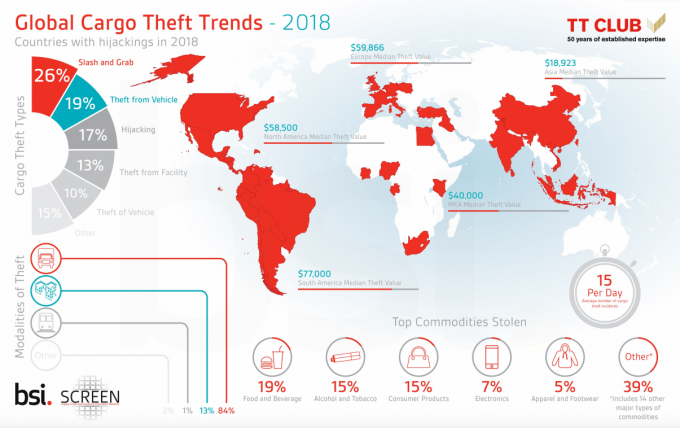Crime gangs using fake security seals to access China-to-US containers
The ability to access and replace the seal on containers is triggering increased amounts of ...

Thefts from trucks remain the biggest criminal risk in logistics, accounting for 84% of cargo theft.
But along with the problem of unsecured parking, the TT Club reports a rising trend of thefts by ‘insiders’.
TT Club, in partnership with BSI Supply Chain Services & Solutions, yesterday released a report on global cargo theft, that says ‘slash and grab’ is the most common type, accounting for 27%, with 29% of the crimes happening in transit.
Theft from warehouses and facilities are less common, ...
Volcanic disruption at Anchorage could hit transpacific airfreight operations
Macron calls for ‘suspension’ – CMA CGM's $20bn US investment in doubt
Forwarders stay cool as US 'liberation day' tariffs threaten 'global trade war'
Shippers snap up airfreight capacity to US ahead of tariff deadline
De minimis exemption on shipments from China to the US will end in May
Tighter EU import requirements proving 'a challenge' for forwarders
Looming Trump tariffs will create 'a bureaucratic monster' for Customs

Comment on this article